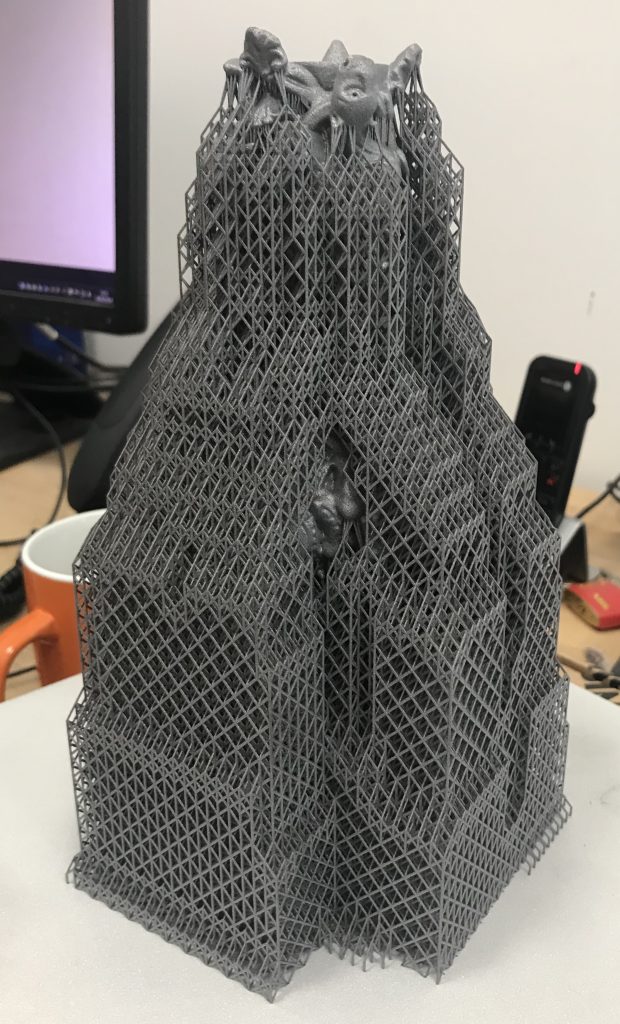Global engineering company Renishaw has produced a replica of a 12th Century Gloucester Candlestick using additive manufacturing (AM) technology. The operation was made possible through a collaboration between Renishaw, Gloucester Cathedral and London’s Victoria and Albert (V&A) Museum.
The candlestick, a remarkable and rare product of early-twelfth century English metalworkers, was originally commissioned by Abbot Peter for the Church of St. Peter of Gloucester. Through the years, it was relocated several times until it finally reached, in 1861, the V&A museum in Central London. With the help of Renishaw, Gloucester Cathedral finally sees the possibility of displaying it once again.

Reproducing the candlestick in 3D
The candlestick is characterized by its complex geometry, partially due to its dense foliage ornaments featuring miniature dragon-like creatures. In order to capture the fine details of the candlestick, Renishaw used a high-precision laser scanner, reconstructing an exact digital replica. Initially, each aspect of the object was disassembled so as to reconfigure a copy of the ancient artifact closely resembling the original. Subsequently, the company was able to 3D print the model with aluminum powder using its multi-laser RenAM 500Q PBF system.
Paul Govan, Customer Training Manager at Renishaw and chief facilitator of the heritage preservation project, explains, “because of the Gloucester Candlestick’s complexity, there is no other way to reproduce it [other] than additive manufacturing. The candlestick is composed of three distinct sections, each with intricate openwork decoration and a patina that has accumulated over 900 years.”

Material selection for the candlestick
The original candlestick is cast in three sections using the cire perdue, or ‘lost wax’, casting technique which dates back as far back as c.200 BC. At the time, the process involved covering the candlestick in wax, then coating it in a heat-proof mold. Once heated, the wax melts away and the metals (in this case, brass alloy and high proportions of silver) take the shape of the outer mold.
Initially, the team of engineers at Renishaw selected titanium to model the replica, but eventually opted for aluminum which is a more malleable powder. By using aluminum instead of titanium, the team was able to attain a higher level of precision, permitting a result more faithful to the original.
AM technology and art
On account of AM technology, people will now be able to see the replica of the real candlestick at Gloucester Cathedral, its designated location in the 12th century. The use of cutting-edge AM technology to recreate antiquities of local history shows how 3D printing can be employed to preserve and propagate art.
In terms of preservation, the 14th Century doors of the Baptistery of Florence were recently replaced with 3D printed replicas. Similarly to the Gloucester Candlestick, the doors were replicated using a 3D scanner which generated a digital twin. This allowed the Baptistery to provide identical doors whilst the original ones underwent a restoration process.
In a bid to promote art, Dallas’ Nasher Sculpture Center, in collaboration with NVision, has previously created 3D printed art replicas for visually impaired visitors. The project involved the scanning and 3D printing of 1:1 scale replica sculptures from renowned artists. Lynda Wilbur, Manager of Tour Programs at the Nasher, explains that “these [3D] scans of works by significant artists of the 20th century allow our public a rare, hands-on experience”. Although at times a topic of controversy, the employment of AM technology can aid in the replication of ancient works under risk of disfigurement, as well as the circulation of art itself.
Subscribe to the 3D Printing Industry newsletter for all the latest additive manufacturing news. You can also keep connected by following us on Twitter and liking us on Facebook.
Looking for a career in the industry? Visit 3D Printing Jobs for new opportunities in your area.
Featured image shows finished 3D printed candlestick. Photo via Renishaw.

